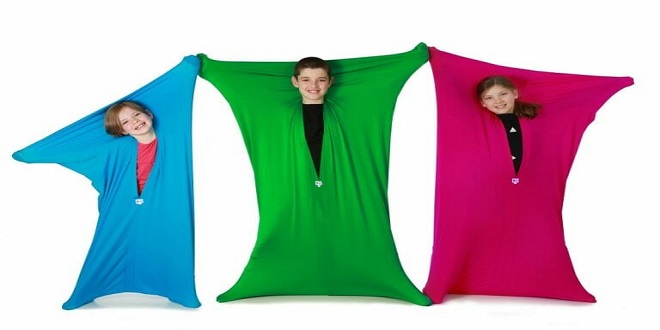If you’re looking for a way to help your child with sensory processing issues, you may have come across body sock sensory tools. But what exactly are these tools, and how do they work? In this article, we’ll explore the benefits, safety, and uses of body sock sensory tools.
What is a Body Sock Sensory Tool?
A body sock is a stretchy, spandex-like fabric that fits snugly around the body, creating a sense of pressure and compression. It’s designed to provide proprioceptive input, which helps the brain better understand where the body is in space. This type of input can be especially helpful for individuals with sensory processing difficulties, including those with autism, ADHD, or sensory processing disorder.
Body socks come in a variety of sizes and colors, and some even have fun patterns or designs. They can be used in a variety of settings, including at home, in school, or during therapy sessions.
Benefits of Body Sock Sensory Tools
There are several benefits to using body sock sensory tools. Here are just a few:
Provides Deep Pressure
One of the main benefits of body socks is that they provide deep pressure input, which can be calming and regulating for many individuals with sensory processing difficulties. The pressure from the sock can help to decrease anxiety, increase body awareness, and improve overall sensory processing.
Encourages Movement
Body socks can also encourage movement and gross motor skills development. Children may enjoy crawling, rolling, and tumbling inside the sock, which can help to improve balance and coordination.
Can Improve Focus and Attention
For some individuals with sensory processing issues, using a body sock can help to improve focus and attention. The proprioceptive input from the sock can help to increase body awareness and reduce distractibility.
Promotes Relaxation and Sleep
Many parents find that using a body sock before bed can help their child to relax and fall asleep more easily. The deep pressure input can be calming and soothing, promoting a sense of relaxation and comfort.
Safety Considerations
While body socks can be a helpful tool for many individuals with sensory processing difficulties, it’s important to use them safely. Here are a few safety considerations to keep in mind:
Supervision
Children should always be supervised when using a body sock, especially if they are using it for the first time. It’s important to make sure they don’t get tangled up or become trapped inside the sock.
Proper Fit
It’s important to choose a body sock that fits well and is not too tight or too loose. A sock that is too tight could restrict movement or cause discomfort, while a sock that is too loose may not provide enough pressure input.
Avoid Sleeping in a Body Sock
While some children may find it comfortable to sleep in a body sock, it’s generally not recommended. There is a risk of becoming tangled or trapped inside the sock, which could be dangerous.
Using Body Socks at Home and in Therapy
Body socks can be used in a variety of settings, including at home and in therapy. Here are a few tips for using body socks effectively:
Use as Part of Sensory Diet
If your child has a sensory diet, incorporating the use of a body sock can be a helpful addition. Body socks can be used before or after other sensory activities, or as a standalone activity.
Experiment with Different Positions
There are a variety of positions your child can use the body sock in, including sitting, standing, crawling, and rolling. Experiment with different positions to find what feels most comfortable and regulating for your child.
Use as a Break or Transition Activity
If your child is feeling overwhelmed or overstimulated, using a body sock can be a helpful break or transition activity. The deep pressure input can help to calm and regulate the nervous system, allowing your child to reset and refocus.
Incorporate Play
Using a body sock doesn’t have to be all work and no play. Encourage your child to explore and have fun inside the sock, whether that’s crawling like a caterpillar or pretending to be a superhero.
Work with a Therapist
If you’re unsure how to incorporate body socks into your child’s sensory diet, or if you’re looking for additional strategies to support your child’s sensory processing needs, consider working with a therapist who specializes in sensory integration.
Are Body Socks Good?
Overall, body socks can be a helpful tool for individuals with sensory processing difficulties. They provide deep pressure input, encourage movement and gross motor skills development, and can help to improve focus and attention. However, it’s important to use body socks safely and effectively, and to work with a therapist to develop a sensory diet that meets your child’s specific needs.
In conclusion, body sock sensory tools can be a valuable addition to your child’s sensory diet. Whether your child is struggling with anxiety, sensory processing disorder, or simply needs a little extra support, a body sock can provide calming, regulating input that can help them feel more comfortable and confident in their own skin. As with any sensory tool, it’s important to use body socks safely and effectively, and to work with a therapist to develop a comprehensive sensory diet that meets your child’s unique needs.
 Isaiminia World Breaking News & Top Stories
Isaiminia World Breaking News & Top Stories




